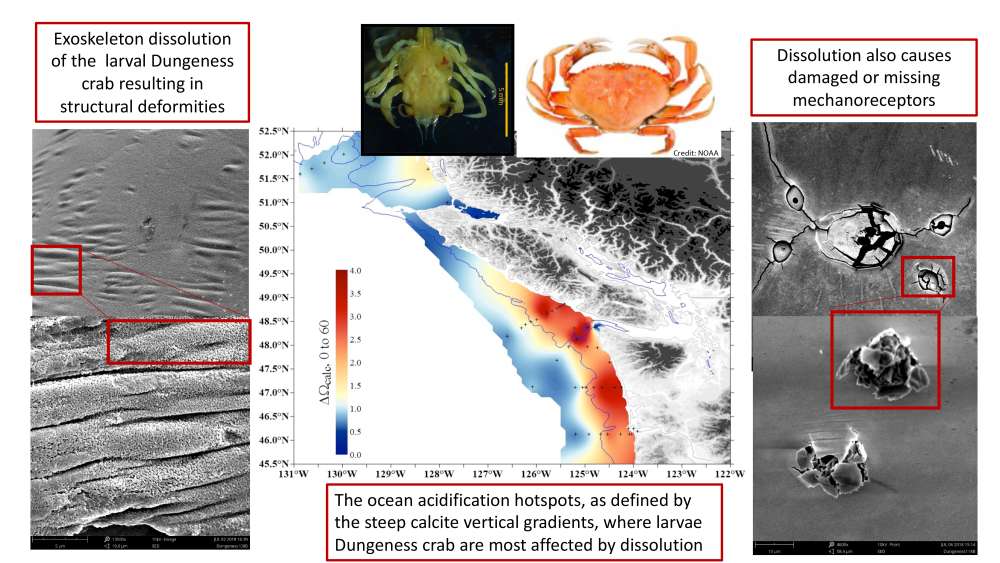One of the most valuable US West Coast commercial and recreational fisheries may be under threat from climate change, according to new research. Once thought impervious, the shells and sensory organs of Dungeness crabs appear to be negatively impacted by ocean acidification (OA), say scientists at the National Oceanic and Atmospheric Administration (NOAA).
When carbon dioxide is taken from the atmosphere and absorbed by seawater, chemical reactions increase the concentration of hydrogen ions in seawater which increases its acidity, reducing the pH in ocean water and decreasing carbonate ions. This can have detrimental effects on marine animals that use calcium carbonate for structural growth, like coral, crabs, oysters, and clams which pull carbonate from the water to build and maintain their calcium shells. This process is intensifying faster on the US West Coast than in the global ocean, particularly in nearshore regions and for the species that call these waters home.
Researchers analyzed samples of post-larval Dungeness crab (Metacarcinus magister) taken during a 2016 research cruise under a high-magnification scanning electron microscope. They found evidence of damage to the carapace, or upper shell, on many larval Dungeness crabs that affected portions of their legs and resulted in abnormal ridging structures and scarred surfaces, which could impact how the crustaceans feed or avoid predators.
“This is the first study that demonstrates that larval crabs are already affected by ocean acidification in the natural environment, and builds on previous understanding of ocean acidification impacts on pteropods,” said lead author Nina Bednarsek, senior scientist with the Southern California Coastal Water Research Project, in a statement. “If the crabs are affected already, we really need to make sure we start to pay much more attention to various components of the food chain before it is too late.”

Crabs with evidence of dissolved shells were also smaller than other larvae, a disconcerting discovery that means damage may cause potential developmental delays that could interfere with maturation.
“We found dissolution impacts to the crab larvae that were not expected to occur until much later in this century,” said study co-author Richard Feely, Senior Scientist with NOAA’s Pacific Marine Environmental Laboratory.
Low pH water in coastal areas was also found to damage mechanoreceptors, hair-like sensors that stick out from the shell and transmit important chemical and mechanical information to the crab that may help the animal navigate. This discovery has not been previously reported and may impact their behavior patterns, resulting in slower movement and impaired swimming, among other things.
Coastal habitats with the steepest ocean acidification were most detrimental. Overall, the findings could impair the survival of Dungeness crab in the long-term.




